Chinese Kung Fu
An Introduction of Martial Arts in China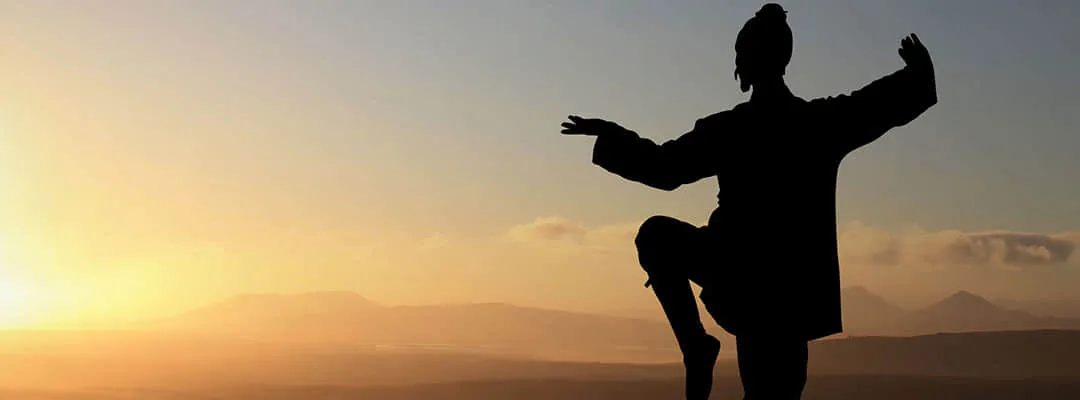
Introduction to Chinese Kung Fu
- What is Kung Fu 功夫 (or Wushu 武术 / Chinese Martial Arts)?
- The Historical Origins of Kung Fu
- Spiritual Influences
- Shaolin 少林 and Wudang 武当
- Northern vs. Southern
- The Origins of Chinese Kung Fu
- The Spirit of Chinese Kungfu
- Bruce Lee and Chinese Kungfu
- Where to Learn Kung Fu in China
- Weapons for Chinese Kungfu
- The Aim of Chinese Kungfu
What is Kung Fu 功夫 (or Wushu 武术 / Chinese Martial Arts)?
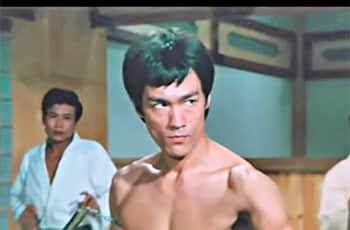 Bruce Lee
Bruce Lee
Aside of mysterious dragons and colourful lampions, one of the first things that comes to people’s minds at the mentioning of China is most certainly Kung Fu. This is because from the 1970s onwards, an unprecedented tide of cinematic works featuring stars such as Bruce Lee, Jackie Chan and Jet Lee celebrated the practice, which led its popularity to intensify beyond Chinese borders. Big Boss (1971), Fist of Fury (1972), The Way of the Dragon (1972) and The Thirty Six Chambers of Shaolin (1978) are few of the many breakthrough movies that provided a platform for Kung Fu to reach international audiences. Ever since, the praxis of Kung Fu has become a passion shared by millions of its practitioners around the globe.
Unlike many of other Eastern Asian martial arts, Kung Fu is not a martial art with a single codified tradition. Instead, Kung Fu is an umbrella term which refers to the various, often very distinctive martial art schools and styles that originated in the country today known as China, but yet, are similar in the movement they adopt, because of its emblematic circular, fluid and continuous motion, infinite and in suspense, that attempts to emulate the grace and power of animals in action. Offering the most diverse set of martial art practices as well as a towering number of schools around the world, the philosophy which underlies Kung Fu is multi-layered and complex, the depth of which is only rarely fully grasped by the Western and even Chinese publics.
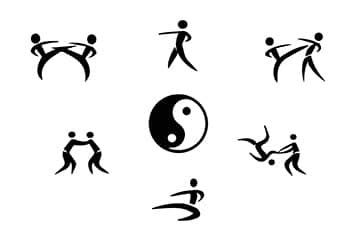
That Kung Fu plays a prominent role in shaping the spiritual beliefs, identities and every day lives of the Chinese is indisputable; but developing comprehensive understanding of its significance requires a contextualization of the practice within the different shifts and occurrences which, over time, came to sculpt China’s cultural landscape. As such, Kung Fu cannot be disentangled from the range of historical, philosophical and religious forces that the practice sought to either personify or rebel against. Through its different styles and teachings, Kung Fu aims to crystalize the ideals, principles and even traumas of a culture which bears the weight of a spectacular five thousand years.
The Historical Origins of Kung Fu
Kung Fu’s roots can be traced deep into the past, so deep that its very contours are barely hinted at in myth, legends and available historiography. Perhaps, only one thing can be said with certainty: that Kung Fu is as ancient as China itself.
Literature indicates that in those early days, aside of specific techniques that may have originated as part of hunting efforts and rudimentary hand to hand self-defence techniques, combat systems were likely developed for military training purposes, but were not solely exclusive to warriors, as some military martial art elements, like archery and charioteering, were included in the six arts of ancient China. The first recorded mention of Kung Fu -albeit somewhat fragmented- can be found in the Spring and Autumn Annals of the State of Lu which were written up during the reign of the Zhou dynasty. Read more on The History of Kung Fu.
Spiritual Influences
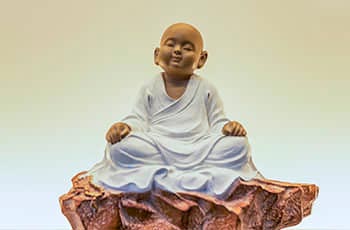
But it was the embrace of Taoism that saw the practice of Kung Fu spread among the general population, even though as a result of the Shaolin monastery’s fame and influence, and its contribution to Kung Fu theory and practice, Buddhism, and particularly Zen Buddhism, came to be closely linked with the image of Kung Fu, and even more so in the rest of the world. The spirituality of Tao, with its teachings of patience, simplicity, fluidness, naturalness and humility, found a perfect companion in the tamed body of Kung Fu practice. Thus, the Taoist concept of Qi, which refers to the air and vitality flow through the body -a type of energy that generates life itself-, became integral and inseparable from the underlying philosophy of Kung Fu.
Shaolin 少林 and Wudang 武当
Among the many accepted classifications of Kung Fu styles, the Shaolin and Wudang classifications are arguably the most important as they philosophically diverge from the Kung Fu tradition, through the conceptual distinction between the two different -external and internal- expressions of personal force, namely Li and Neijing, as well as their differing scholarly emphasis.

On the one hand, Li stands for the external expression of personal force, which is achieved by means of a corporeal development of movement and strength, in a praxis that involves the precise manoeuvring of muscles as well as the algorithmic timing and execution of bodily moves. The Shaolin classification, which focuses on Li, draws its name from the Shaolin Monastery, which is perhaps the most important institution in the Kung Fu world. In that regard, the old adage "all martial arts under heaven originated from Shaolin" speaks for itself.
The styles, forms and exercises of Shaolin Kung Fu set the school apart as the largest in the world. Indeed, Shaolin’s contribution to the expansion of Kung Fu beyond Chinese borders is unrivalled: hundreds of martial art schools in Japan, Korea as well as across Southeast Asia and the globe have built their teachings upon Shaolin influences. In the West, Shaolin came to be associated not only with Buddhism and Kung Fu, but also with a notion of the untranslatable and transcendental in Chinese culture.
Neijing, on the other hand, refers to the internal taming of the Qi, a spiritual and mental endeavour: it is a force which seeks to reign in spaces unattainable by means of measurement, reason or the senses. It condenses the universe into a single breath of awareness and potential. The Wudang classification, which focuses on Neijing, acquired its name from the legend which narrates that, in the Wudang mountains -that are home to a number of sacred and renowned Taoist monasteries-, the hermit Zhang Sanfeng became immortal by developing a masterly finesse in Neijing.
Northern vs. Southern

Another widely used Kung Fu classification is one which is based on geography, and which divides its practitioners into two major groups, Northern and Southern, taking the Yangtze river as their line of demarcation. The differences between the two groups lie in the specific techniques, transitions and postures that are adopted in function of the geographical position of the group: as such, while the Northern schools tend to adopt acrobatic, flying kicks and high postures, Southern groups exhibit more cautious, stable stances and quick, powerful strikes.
Today, Kung Fu is widely recognized as a Chinese cultural product par excellence. Decades prior to China’s ascent to the status of the global superpower, Kung Fu had already opened the door for Chinese culture to spread out into the world. And to this day, the practice is still one of her most loved ambassadors.
The Origins of Chinese Kung Fu
People had to hunt for food in primitive societies, so Chinese Kungfu originated. Over time with the development of productivity, people invented weapons. They found the most efficient methods to fight and defend themselves against attacking animals or people and taught these methods to their descendants. Chinese Kungfu was improved continuously during the teaching and learning.
In 495 AD, the then emperor of China built the Shaolin Temple on the Mount Song to home an Indian monk called Batuo. From then on, common people had their own place to learn Chinese Kungfu. There is an old saying “Every kind of Chinese Kungfu originated from the Shaolin Temple”. There might be no modern Kungfu if there were no Shaolin Temple.
Continue reading Top 5 Origin Place of Kungfu
The Spirit of Chinese Kungfu
Endurance is the chief spirit of Chinese Kungfu, which means the people who learn Kungfu must try their best to avoid violence, even though their enemies may be much weaker than themselves. Chinese people always think harmony is the highest priority, which is also one of spirits of Buddhism. The Shaolin Temple was built by Buddhist monks, so people who want to learn Kungfu in the Shaolin Temple must accept the Buddhist spirits.
New Kungfu students must learn endurance first by carrying water from the foot of a mountain to the top of a mountain, reciting Buddhist scriptures or even being beaten by their masters. They can never learn fighting until they can face these hardships peacefully.
Bruce Lee and Chinese Kungfu
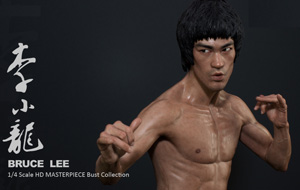 Bruce Lee
Bruce Lee
Most Westerners began to know and love Chinese Kungfu from Bruce Lee’s movies. It was amazing for them to see Bruce Lee beat his opponents, who looked much taller and stronger than Bruce Lee, after just a few punches.
When Kungfu teachers first went to the Western world, they opened Kungfu classrooms to teach this discipline. However later, more and more international students found it was impossible to learn both the spirit and skills of Kungfu in their own countries, so they went to China.
Where to Learn Kung Fu in China
In fact, Kungfu can be seen and shown in almost every park in China. Some parks are free to citizens in morning. Lots of retired people practice Kungfu for healthy reasons in these gardens. This kind of Kungfu is usually slow. The more exciting Kungfu can be found in the places below.
Kungfu Schools in some Chinese Cities
There are Kungfu schools in some Chinese cities, especially in some tourist cities. Students in these schools learn Kungfu to perform for tourists. These schools are also open to tourists, who will watch their students’ Kungfu shows. They also deliver lectures or tell stories about Kungfu to tourists. In a word, the history of Kungfu can be learnt in these schools, but not the skills.
Shaolin Temple
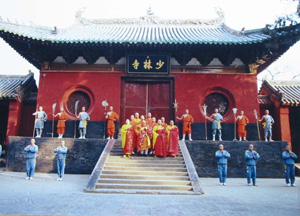 Shaolin Temple
Shaolin Temple
There is a North Shaolin Temple and a South Shaolin Temple in China. The North Shaolin Temple, located on the Mount Song, is much more renowned than the South Shaolin Temple. When Chinese people talk about the Shaolin Temple, they usually mean the one on the Mount Song. The South Shaolin Temple is located in Fujian Province, but the exact positon is in dispute. What has been confirmed is that the Kungfu taught in the temple in Fujian Province is the authentic Kungfu of South Shaolin Temple.
In the Shaolin Temple, students have to learn from the basic skills, such as sitting in meditation and the horse stance. Senior monks will judge a candidate’s morals and personality before teaching Kungfu. Only a few candidates can pass the examination. In a word, learning Kungfu in the Shaolin Temple is as difficult as passing the entrance examination of Harvard University. There are only around 20 international students in the Shaolin Temple.
Wudang Mountain
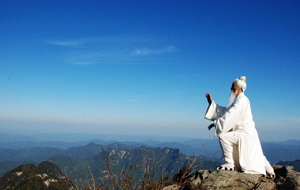 Wudang Mountain
Wudang Mountain
Wudang Mountain is a Taoist mountain. It is said that Zhang Sanfeng, who was a martial artist in the end of Song Dynasty (960-1279), created his own style of Kungfu on the Wudang Mountain. The spirit of Wudang Kungfu is to beat opponents with slow and gentle skill. Wudang Kungfu is also good for your health. It is said Zhang Sanfeng died at the age of 125. Perhaps it is possible for a few people nowadays, but it was an incredible feat nearly a thousand years ago.
Tai-Chi Chuan, or Chinese Shadow Boxing, was created by Zhang Safeng and is the most practiced Kungfu in the world. In morning, lots of senior Tai-Chi Chuan students practice it in the park, city square or their houses. It has been proven by scientists that the Tai-Chi Chuan is good for a human being’s respiratory system and blood circulation.
Nowadays there are Kungfu schools, where Tai-Chi Chuan and other Kungfu can be learnt on the Wudang Mountain. People can also just live and learn Kungfu on the mountain without finding a teacher, there are some Wudang Kungfu fans doing it now! They believe Wudang Mountain is the best place to practice Wungdang Kungfu, so they give up their metropolitan lifestyle’s and escape to the mountain.
Tips: The life on the mountain is simple and tough. Please think twice before making this decision.
Read more on Where to Learn Kung Fu in China and Where to See the Kung Fu Show
Weapons for Chinese Kungfu
It is crucial for Kungfu students to know that the endurance is the spirit of Kungfu before they start practicing Kungfu with weapons. Chinese Kungfu is created for peace rather than violence. The popular weapons for Chinese Kungfu include the sword, broadsword, Chinese spear, Shaolin Stick, and the fist.
The Sword
 Chinese Swords
Chinese Swords
The Sword is the most elegant weapon in the world of Kungfu. A lot of the most splendid movements of Kungfu are performed with the sword. The Chinese sword is usually light and convenient to carry. A skillful swords man can stop his enemy’s attack without hurting his enemy. Almost every part of a Chinese sword can be used to attack, including the scabbard. In Chinese Kungfu novels, the man with the highest level of Kungfu usually uses the sword as his weapon of choice.
The Broadsword
The Broadsword is much heavier than a sword, so the man who uses a broadsword is usually very strong, but lacks flexibility. When someone slashes a broadsword towards his enemy, it means it is both a real attack and a menace, because there is a terrible sound as it is being waved in the air. This kind of sound can frighten enemies on the battle field. The lack of flexibility can also be a fatal weakness for the man who uses the broadsword, because if he misses the target after the first attack, he cannot change to a defending gesture or deliver another attack quickly. His enemy can attack back before his defense is ready.
The Chinese Spear
The Chinese spear is perhaps the most overbearing of weapons in ancient times. Lots of generals used it as their weapon of choice. It is difficult to learn how to use a Chinese spear, because it is both heavy and long, and there is a blade on one end of the spear. The man who uses a Chinese spear must be both very strong and flexible, otherwise he can be hurt by his own spear. The sharp end is the most dangerous part, needing both power and accuracy to stab targets with the sharp end. The red tassel fastened on the sharp end is an indispensable part of a Chinese spear. When a spear is being waved in the air, the flying red tassel can dazzle and scare enemies.
The Shaolin Stick
The Shaolin Stick, made from wood, is the common weapon used in the Shaolin Temple. The monks have to learn Kungfu with a stick first before they can learn to use other weapons. It is always a bad thing in the Buddhist spirit to badly hurt your enemy. Stick skills can both stop enemy’s attack and avoid hurting the enemy badly. The monks believe their enemy will not strike out after being “taught” by stick skills. The Shaolin stick is usually long and flexible. A monk who uses a stick can swipe several of his opponents in a single wave. Stick attacks also include stabbing, but please remember there is no pointed blade on a stick and your enemy can still attack after being stabbed.
The Fist
Fists are everyone’s weapons. The biggest advantage of fists is they are connected with people’s arms and brain so there is no need to worry about a fatal fall in a fist fight. Meanwhile the biggest weakness of the fists is that they are a part of a person’s body because their owners feel pain when hit by enemy or even when hitting the enemy. Usually, the fists are not described as weapons by most people, however, there are still Chinese boxing masters who only fight with fists. Dodging is the first skill to learn before learning Chinese boxing, because when somebody fights only with his fists, he may have be surrounded by his enemies. They may well be armed with metal weapons, so he must first dodge before looking for a good time to counter-attack.
The Aim of Chinese Kungfu
The aim of Chinese Kungfu is to avoid violence. If you can successfully persuade your enemies by words, never use Kungfu.
Check out The Role of Kung Fu in Chinese Culture to learn more.

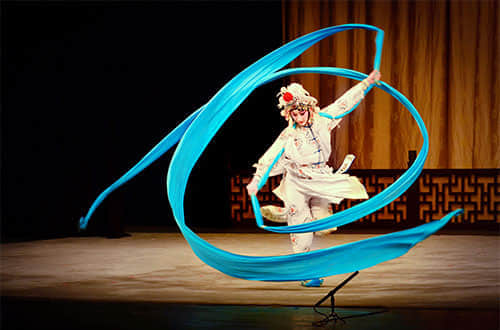 Chinese Operas
Chinese Operas 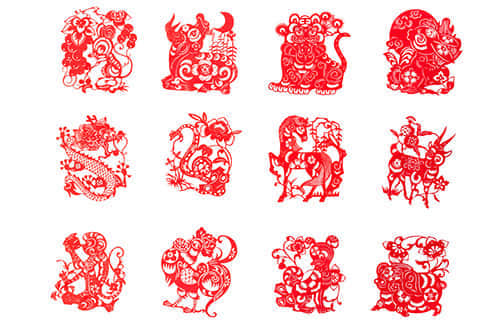 Chinese Zodiac
Chinese Zodiac 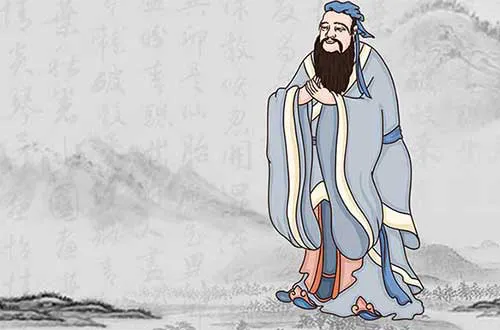 Confucianism
Confucianism 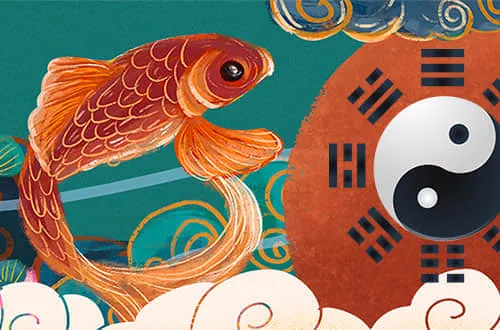 How to be Lucky in China
How to be Lucky in China